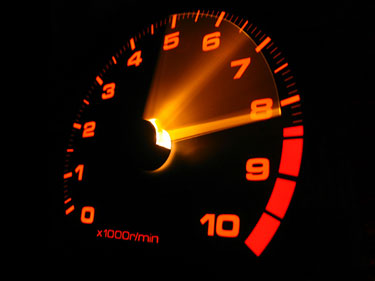Below is a post from a fellow PGMFI.ORG member and fab works Joseph Davis. I couldnt help put host the topic on the forums as it is filled with inffo everyone needs to know about when choosing the correct turbo manifold!!! Enjoy!
_________________________________________________________________________________
A blathering on exhaust theory, with an eye to turbocharged
implementations, because I've never cared much for naturally
asphixiated sissies.
Substantially constant pressure turbocharging.
Groupings of cylinders/banks of cylinders in such a
manner that two or more exhaust events overlap (substantially).
Characterized by constant, elevated mean exhaust manifold
pressures. The up side is the turbine is fed with a constant
supply of exhaust pressure/flow/energy. The down side is the
high ambient exhaust pressure hinder the flow of exhaust gas and
heat out of the combustion chamber/head. Turbine efficiency is
high, runner efficiency is low.
When set up correctly they work well-ish. Typically
through the use of two things: long runners and precision merge
collectors. The runners are expansive, to mute exhaust pulses,
and long to prevent the exhaust pulse from bouncing off the
turbine and returning to the originating exhaust valve before it
closes (thereby foulling the chamber as the valve closes with a
backwash of inert exhaust gas, and heat). A correctly designed
merge collector reduces restriction where the runners merge;
despite Full Rice Geoff's imbecilic blatherings about these being
high tech and his invention, it's been common knowledge since
before his birth that a shallow convergent angle of entry greatly
smooths disparate flows together.
It is appropriate to note at this point, that in some circles the
verdict is still out on long vs short runner lengths in constant
pressure turbocharging. I concur that the bulk of the gain in
the refines constant pressure turbo systems is from a smoothly
transitioning merge collector, but posit based on an ed-ju-muh-cated
guess that tuning runner length and diameter to suit desired
power band will result in some gains. Keep an eye on harmonics,
and the relationships of EGTs, exhaust flow speed, speed of sound
as affected by temperature, etc.
Pressure wave aka shock wave turbocharging. Like, OMG!
Groupings of cylinders/banks of cylinders in such a
manner that no two exhaust events overlap (... substantially...).
This *drastically* lowers ambient exhaust manifold pressure,
which ensures excellent scavenging and flow of exhaust/heat from
the combustion chamber at all loads and pressures. However,
since each pressure pulse builds and is for the greater part
spent before the next exhaust valve opens, the turbine is not fed
a steady supply of pressure/flow/energy. Turbine efficiency is
low, runner efficiency is high.
When correctly done, port diameter is kept small to keep
pulse strength as well as velocity high. Runner length is as short as
possible, to avoid excess volume for the exhaust pressure to expand
into as opposed to spending itself across the turbine. Spool time is
enhanced, part throttle power and efficiency is enhanced, but WOT
power suffers from inconstant pressure to feed the turbine. This is
alleviated somewhat by the advent of split scroll turbines, but... no
free lunches.
So, yeah, I've been screaming that horseshit- er,
horsepower, per psi is irrelevant for some time now. This is a
good example of this. So you have to "turn the boost up" in
order to hit the power levels of a properly refined constant
pressure turbocharging system... mean exhaust manifold pressures
have decreased dramatically, and exhaust manifold pressure for
the bulk of any particular cylinder's exhaust event is decreased
even further. Less heat and less stale exhaust gas is left in
the chamber, and for a given setup running a particular flavor of
fuel more power is made before knock sets in.
This is seen a lot in diesels. Groupings of no more than
three cylinders, with no more than 240 degrees of exhaust cam
duration, in such a way that no two (sets) of exhaust valves are
open simultaneously. This is also how the EVO 8's OEM manifold
is constructed - that should give pressure wave turbocharging the
riceboy stamp of validity. It's right up there with VTEC as the hot
thing! Although this actually has some affect on performance instead
of annoying exhaust noise. Sorry.
Pulse converters.
Pulse converters are, quite simply, ejectors or
(DeLaval... heh...) nozzles that accelerate pressure waves before
reaching the turbine. The idea is to convert an amorphous wave
into a burst of focussed kinetic energy.
So?
Constant pressure application first: flow is accelerated,
and the transmission of a particular pressure wave to an adjacent
runner is prevented. Have you ever heard of an anti-reversion
chamber?
When used with pressure wave turbocharging, WOT
turbine efficiency is greatly enhanced. At the cost of some runner
efficiency under part throttle conditions - no sir, still no free
lunch here.
Afterword:
Make your fancy-pants (insert Brand Name here) tubular
manifold with cylinders 1 & 4 and 2 & 3 tied together, and
feeding a split scroll turbine housing. Install ejectors as
needed, if worried about hp/psi numbers, to impress magazine
reading friends you will be kind enough not to introduce me to -
unless they wish to race for money. Or you can use a valve (spare
wastegate, hmm?) to marry the two collectors/scrolls at WOT or
after a certain psi and have your quick spool and hp/psi at the
same time.
_________________
Blah.
